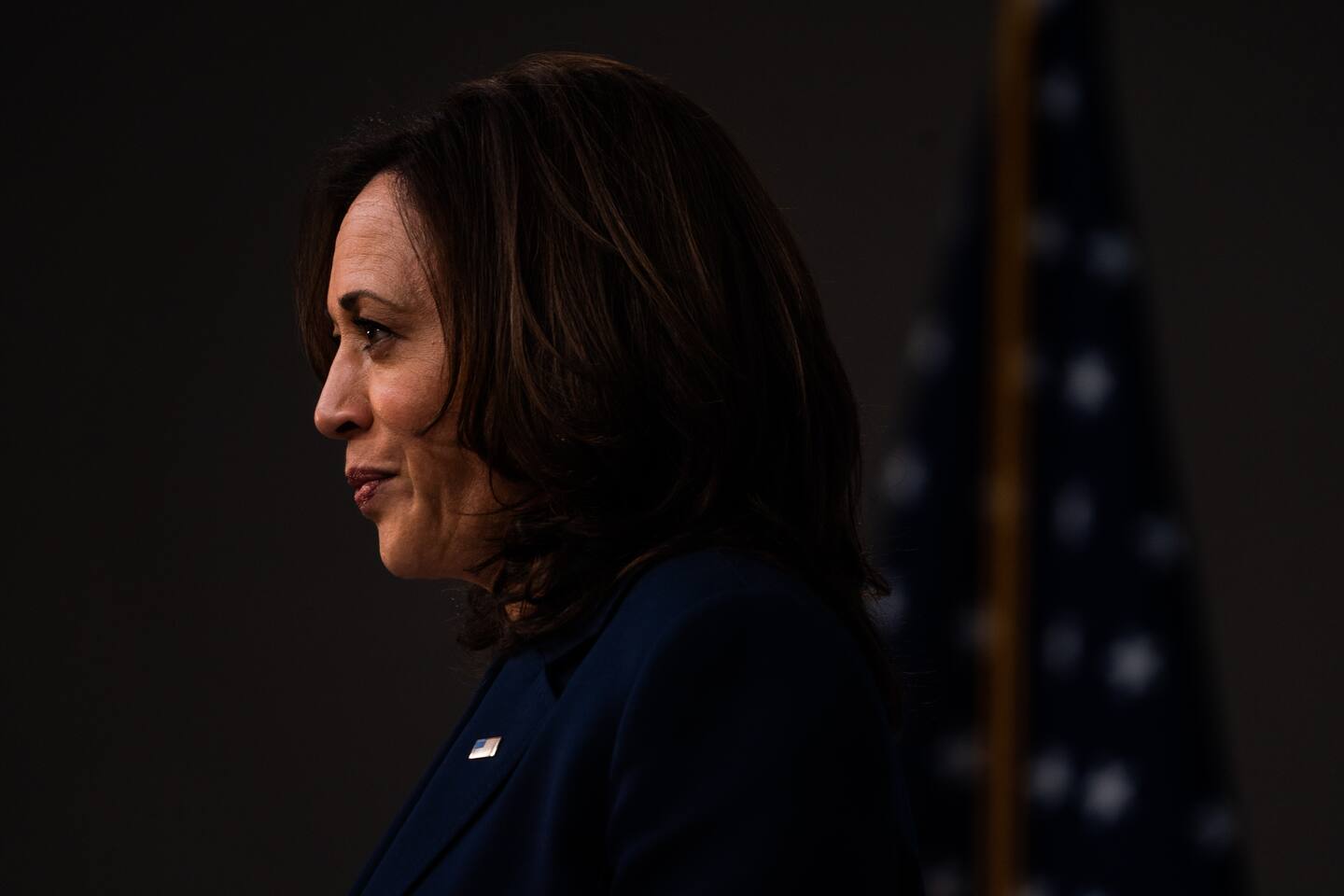Kamala Harris set to showcase policy chops by touting Biden infrastructure plan

Environmental Protection Agency Administrator Michael Regan, the former head of North Carolina’s environmental agency, will be accompanying Harris in the state. The EPA, along with the Department of Energy, will be key to the administration’s broader $174 billion electric vehicle push.
Harris will visit Thomas Built Buses manufacturing plant in High Point, N.C., to discuss the $20 billion investment being proposed by the administration to convert the entire U.S. fleet of gasoline and diesel-powered school buses to electric vehicles.
The visit will be preceded by a Harris speech at the Center for Advanced Manufacturing at Guilford Technical Community College highlighting the administration’s work during its first 90 days days and its goal of creating more jobs than any other White House in history.
The infrastructure package “will be the largest jobs investment our country has made since World War II,” Harris will say, according to excerpts of her speech provided to The Washington Post.
“And it’s not just about jobs. It’s about good jobs… At a good job, you shouldn’t have to worry about your safety at work. At a good job, you shouldn’t have to go into debt for a diploma that promises a decent paycheck,” Harris plans to say.
Harris’s appearance on the campus of the technical school is also designed to underscore the training required for the new manufacturing jobs the administration hopes to create if the infrastructure plan is approved by Congress.
Although Harris has yet to explicitly highlight as much, her policy footprint threads through the far-reaching infrastructure proposal the administration touts as the most significant federal jobs investment since World War II. As a senator, Harris co-sponsored several of the bills and investments incorporated into Biden’s infrastructure effort, including the plan’s proposed $111 billion investment in water infrastructure and $100 billion investment in high-speed broadband infrastructure.
The administration’s push to electrify the nation’s school bus fleet is derived directly from Harris’s original bill, according to senior administration officials. But it goes even further in trying to transition school buses — which mostly run on diesel fuel and make up 90 percent of transit buses in the United States.
The measure will prioritize transitioning school buses in districts serving the most students on free and reduced lunches and those with high local air pollution, as diesel engines are a major source of harmful pollutants and may contribute to respiratory illnesses in children. A 2001 study found that “a child riding inside of a diesel school bus may be exposed to as much as four times the level of toxic diesel exhaust as someone riding in a car ahead of it.”
The proposal includes the expense of purchasing the electric buses, as well as funds for retraining workers, implementing the necessary charging infrastructure, along with broader technical assistance for districts to adjust for things like route planning since fuel stops would no longer be required. The proposal would also increase the resiliency of local electric grids, a senior administration officials argued, since buses only operate in the mornings and in the afternoons and can be used as grid assets at other times.
While the endeavor is ambitious, the transition is already happening in some places. Highland Electric Transportation purchased and deployed over 300 electric school buses from the company for Montgomery County Public Schools in Maryland earlier this year — the largest single procurement of electric school buses in the country.
“One of the things that the Americans Jobs Plan does is find some of the innovative things that have worked on the ground and in state and local governments — and try and see what we can amplify and expand for the federal government,” a senior administration official said.
That administration official did not have a specific estimate for how many jobs electrifying school buses would create — and it’s unclear how many jobs the overall infrastructure plan would offer.
Republicans have signaled support for increasing spending on electric vehicle infrastructure but Harris and the president still face a long, uphill battle in getting the infrastructure bill to the president’s desk — let alone winning over any GOP lawmakers.
Though she’s still defining her role as Biden’s No. 2, Harris is playing a key role in selling the infrastructure package and will spend much of the spring traveling the country to tout various parts of it, some of them things she’s previously championed as senator.
“The way a vice president can have impact is when they define ideas — it’s a measure of her influence in a less obvious way,” said Joel Goldstein, a vice presidential scholar and law professor at Saint Louis University School of Law. “And of course, one of the things that’s so tricky about the vice presidency is so often that what you do and contribute isn’t something that people want to flag.”
She has been tapped to slow the rush of migrants to the southern border, criss-crossed the country to discuss the administration’s $1.9 trillion stimulus package, holding meetings with lawmakers and small businesses in the runup to its passage.
Harris intends to play a similar role with the infrastructure plan, according to senior administration officials: she visited a water treatment facility in Oakland, Calif., last month to promote the administration’s goal of replacing 100 percent of the nation’s lead pipes and service lines to deliver clean drinking water and reduce lead exposure to schools, homes and childcare facilities.
The provision is reminiscent of Harris’s 2019 Water Justice Act, which called for $250 billion in federal spending on access to safe and affordable drinking water by replacing lead-containing services lines.
The infrastructure plan’s broadband investment proposal also mirrors a bill Harris co-sponsored in the Senate that would invest $100 billion in building high-speed broadband and infrastructure in underserved and unserved communities.






